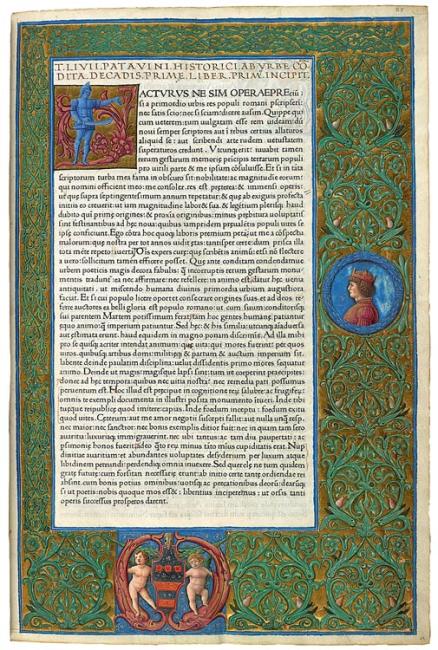
Livy (Titus Livius Patavinus)
Historiae romanae decades (Roman History)
Opening: Illuminated Page with the Coat of Arms of the Venetian Donà Family
1470
Printed on vellum by Vindelinus de Spira in Venice
Purchased by Pierpont Morgan with the library of Theodore Irwin, 1900
PML 266
Livy's Historiae romanae decades was one of the first classical Latin texts to be printed in Venice. The book and chapter headings, at the top in gold, were added by a trained scribe. Woodcut patterns that served to guide the miniaturist were stamped into the margins after printing and appear underneath the intense green vine motifs contrasting with gold ground of the painted borders. The blue soldier in Roman armor with an outstretched arm represents the letter F, thus providing the initial for the first word on the page, Facturus.
Printing
In 1469—some fourteen years after Johannes Gutenberg printed a bible using movable type—this transformative technology arrived in Venice, and the city rapidly became Europe's preeminent center for book publishing. During the last few decades of the fifteenth century, a new kind of volume appeared: the hand-illuminated printed book. Trained scribes and artists carefully added chapter headings, initials, borders, and lavish frontispieces to the printed text. These luxury items were created for a wealthy and prominent clientele—predominantly Venetian nobility.
The impossibility of hand decorating ever-increasing numbers of books led Venetian printers to adopt mechanical means to embellish their printed texts. From the 1490s, it became common to illustrate books by incorporating woodcuts. As the market for printed material flourished, artists such as Titian and Battista Franco produced masterly woodcuts and engravings to enhance their reputations.
